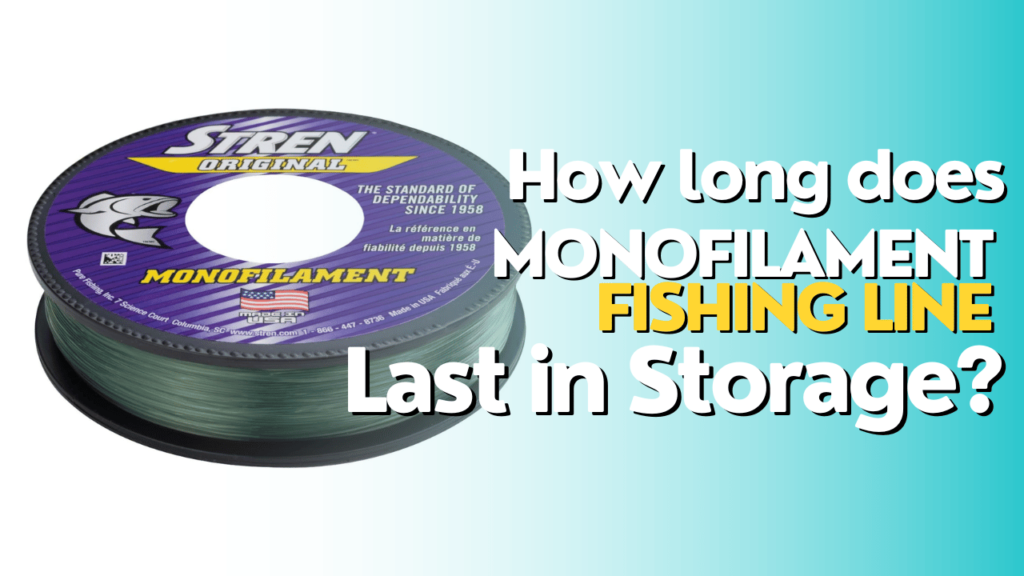As an angler, I’m always looking for ways to extend the life of my gear. Quality mono can hold up on the spool for a few seasons, proper storage and handling are key to maximizing its shelf life.
I’ve picked up some handy tips over the years on getting the most out of my line.
Join me as I share my secrets to making mono last, so you can avoid wasting money on premature replacements.

First thing first, How Long Does Monofilament Fishing Line Last in Storage?
The lifespan of monofilament fishing line in storage depends heavily on the quality of the line and the storage conditions. Lower quality bargain lines may only last about 1 year before degrading, while high-end premium monofilament can reliably last 2-3 years if stored properly.
Here are the With a few things you need consider to keep your line in peak shape and ready for action.
Line Quality Significantly Influences Longevity
Cheaper monofilament only lasts about 1 year, while high-end lines store reliably for up to 3 years.
Premium monofilaments like Sufix Elite and Berkley Vanish contain advanced polymers and expert construction.
They maintain strength and responsiveness in storage. Bargain bulk lines use lower grade materials without specialized coatings, quickly degrading from heat and humidity.
Investing in quality monofilament can triple shelf life.
Here are the few best Monofilament Fishing Line for longevity:
Ideal Storage Conditions For Maximum Freshness
Monofilament lasts significantly longer when stored properly in a cool, dark place like a tackle box or closet.
Heat, sunlight, and humidity accelerate line degradation. The spool shape can also deform, ruining castability.
A stable temperature around 70°F is optimal for preservation. Storing line loosely on its original spool helps too.
Replace Line Annually For Best Performance
Anglers should replace monofilament annually instead of maximizing shelf life. Old line becomes dry and brittle, cracking under stress.
It also develops memory coils and loses sensitivity for detecting bites. Fresh line casts farther and has reliable strength for fighting fish.
Annual replacement provides the best performance and safety.
Proper storage and handling make monofilament fishing line last 1-3 seasons.
With premium line and ideal conditions, it reliably retains top shape on the spool or rod. Careful anglers get the maximum value from their line investment.
How to Store Monofilament Fishing Line to Extend Its Lifespan
The ideal storage conditions for maximizing monofilament lifespan are cool, dry, and dark environments.
Exposure to heat, humidity, and UV radiation degrades the line over time.
Store fishing line spools inside a protective tackle box or closet rather than your garage or attic.
The temperature should be stabilized around 70°F if possible. Avoid direct sunlight and moisture.
Keeping the line tightly wound on its original spool helps retain the optimal shape for smooth casting as well. Letting it loosen and unwind deforms the line memory.
For traveling and transport, seal spools in a plastic bag to guard against temperature and humidity changes.
With ideal storage conditions, high-end monofilament line can maintain peak performance for 2-3 years before needing replacement. Proper care while in storage prolongs longevity and effectiveness.
How Often Should Monofilament Fishing Line Be Replaced

While quality monofilament can last several years in storage, anglers should replace their line at least annually for best performance.
Even if stored properly, monofilament degrades with age, losing strength, sensitivity, and suppleness from repeated use. Old line is more prone to twisting, cracking, and sudden breakage.
Replacing monofilament fishing line every year ensures it handles smoothly with maximum fighting power should you hook a big fish. Fresh line also improves casting distance and accuracy.
Plan to replace your monofilament seasonally or yearly regardless of how much life it has left on the spool. The minimal expense of new line is worth the reliability and performance.
What are the Signs that Monofilament Fishing Line Has Degraded

There are several clear symptoms that indicate monofilament fishing line has deteriorated and should be replaced:
- Brittleness and cracking under stress
- Permanent memory coils that ruin casting
- Discoloration and loss of sheen
- Increased roughness, fuzziness, abrasions
- Lack of sensitivity for bite detection
- Sudden snap break-offs while fighting fish
Monofilament that feels stiff or limp, retains coils, has visible abrasions, or shows other physical signs of wear should be replaced.
Testing the line tension and observing its movement while reeling can also reveal issues before breakage occurs. If the line does not feel smooth, responsive, and strong, it is past its prime.
Replace degraded monofilament with fresh high-quality line for the best performance and fish-fighting capability.
